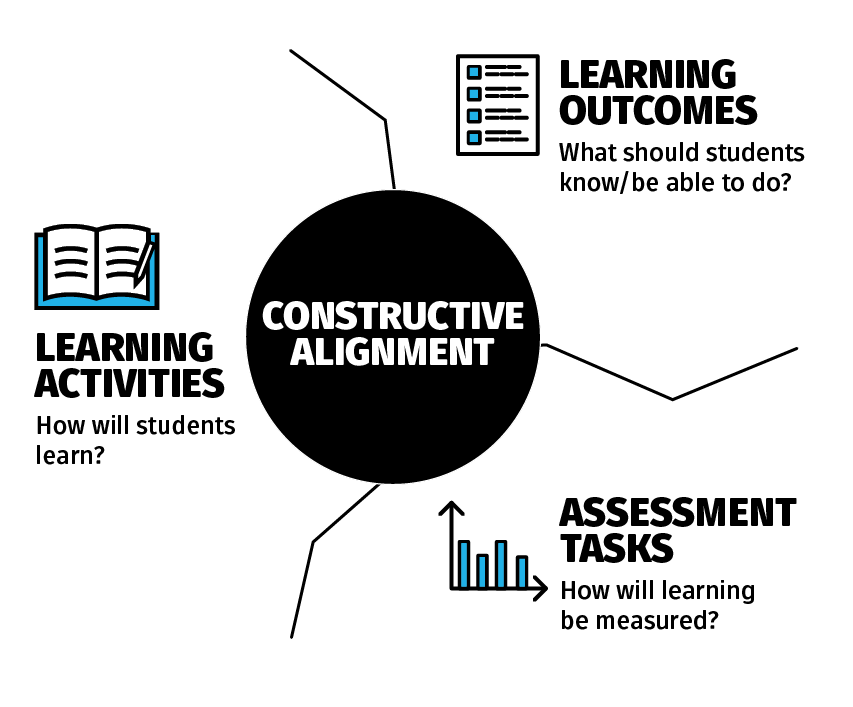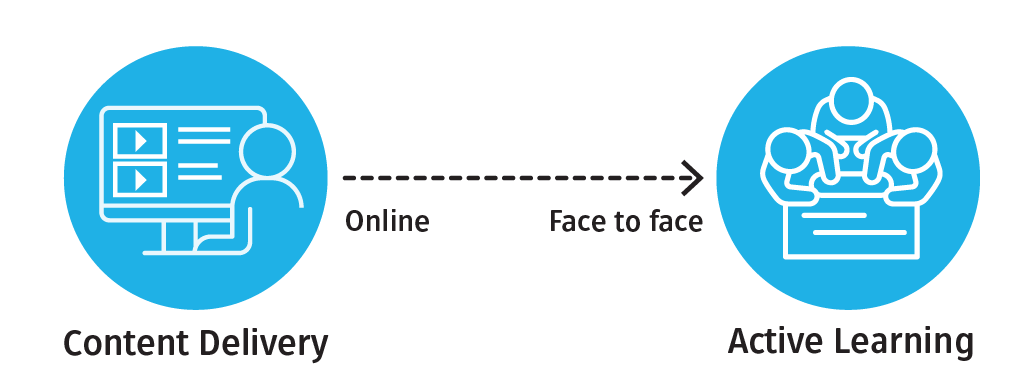Step 1 - Decision Tree

Step 2 - Revision Principles
1. Consider CAL and Contact Hour requirements
- Changes must be made by 06 June 2025.
- Will learning activities (lectures tutorials, labs, etc) remain the same as the current offering? When will these be scheduled across the 12 weeks?
- Can existing contact hours be repurposed to increase teaching time with students and move towards blended delivery? For example: could you replace one or two lectures across the semester with online content, and use the in person time to conduct assessment or support active learning.
2. Focus on minimal impact
- Focus on adjusting only what is essential (such as due dates, major milestones, course outlines, schedules), while retaining existing resources or activities that already align with Course Learning Outcomes (CLOs).
3. Map and sequence content early
- Review the current 13-week schedule and identify which weeks or topics can be re-sequenced, combined, or reduced.
- Prioritise or consolidate content to avoid “content overload” and spread “must-have” content in a balanced way across the compressed teaching period.
- Curate vs Create: where quality resources already exist on a topic, use these rather than create new resources. If new materials are required, particularly learning media, begin creation of these resources as soon as possible considering the condensed end-of-year period.
4. Maintain alignment of outcomes, activities, and assessments

- Ensure all aspects of each CLO remain in scope of any changes made to course content and assessment.
- Communicate any revisions you make to a CLO, learning activity, or assessment, with the program convenor or head of discipline as soon as possible.
- Any changes to CLOs must be documented in CourseLoop.
- Ensure students are supported with appropriately scaffolded learning and assessment.
- Consider revising assessment to introduce secure assessment.
5. Consider UON Modes of Delivery and technology integration
- Provide flexible access to course content (short lectures, text, and online active learning) to allow for student revision and self-pacing.
- Maximise the benefit of face-to-face time with students by using this for active learning rather than passive content delivery (see Blended Mode of Delivery).
Blended Learning
- Consider how different modes of delivery may expand flexibility for students.
- Consider the use of GenAI in teaching and learning to supplement student engagement with course material.
- Ensure any changes to course content (and delivery) are reflected in Course Handbook, Course Outline, and CourseLoop.
6. Assess impact on significant summative assessments
- Identify any assessments previously due in Week 13.
- Consider if due dates need to be changed to align with 2026 calendar.
- Consider interim milestones to help students manage progress.
- Ensure that the final summative tasks still provide ample time for students to undertake assessment in-line with content delivery.
- Embed opportunities for scaffolding the assessment and feedback within the assessment itself. For example, draft deadline, progress reports, or peer review stages. This can be particularly useful in compressed teaching terms to support students to keep on track, and reduce end-of-term pressure.
7. Review assessment volume, marking criteria, weighting, and distribution
- Where possible, reduce assessment volume.
- Examine current assessment weightings; consider breaking one large task into two smaller parts if it helps reinforce constructive alignment and allows increased opportunities for feedback.
- Investigate opportunities to implement secure assessments within your course.
- Where feasible, introduce early low-stakes assessments to reduce final assessment pressure and encourage student motivation.
8. Integrate timely and intentional formative assessments
- Utilise shorter, timely light touch formative assessments (such as quizzes, online discussions, quick reflections, and self-assessment checklists).
- Design formative assessments to provide rapid feedback, and promote student progress and accomplishments.
9. Ensure fair and realistic student workloads
- Consider overall student workload to avoid overloading single weeks or clustering multiple high-stakes assessments in short timeframes.
- Consider the mid semester one-week break (instead of two) and how this affects students’ time for revision, preparation, or project work.
- Consider adjusting assessment weightings to allow for shorter assessment preparation and assessment marking time
10. Collaborate across disciplines and share good practice
- Seek input from peers who have experience with shorter teaching periods (e.g., summer/winter intensives) or who have already tested revised schedules.
- Share resources, templates, and tips for balancing content reduction or re-scaffolding.
- Where possible, coordinate across courses within the same discipline to avoid clustering major assessments in the same week.

Phone: 02 4921 8602
Email: ldti@newcastle.edu.au
Website: newcastle.edu.au/ldti
The University of Newcastle acknowledges the traditional custodians of the lands within our footprint areas: Awabakal, Darkinjung, Biripai, Worimi, Wonnarua, and Eora Nations. We also pay respect to the wisdom of our Elders past and present.

